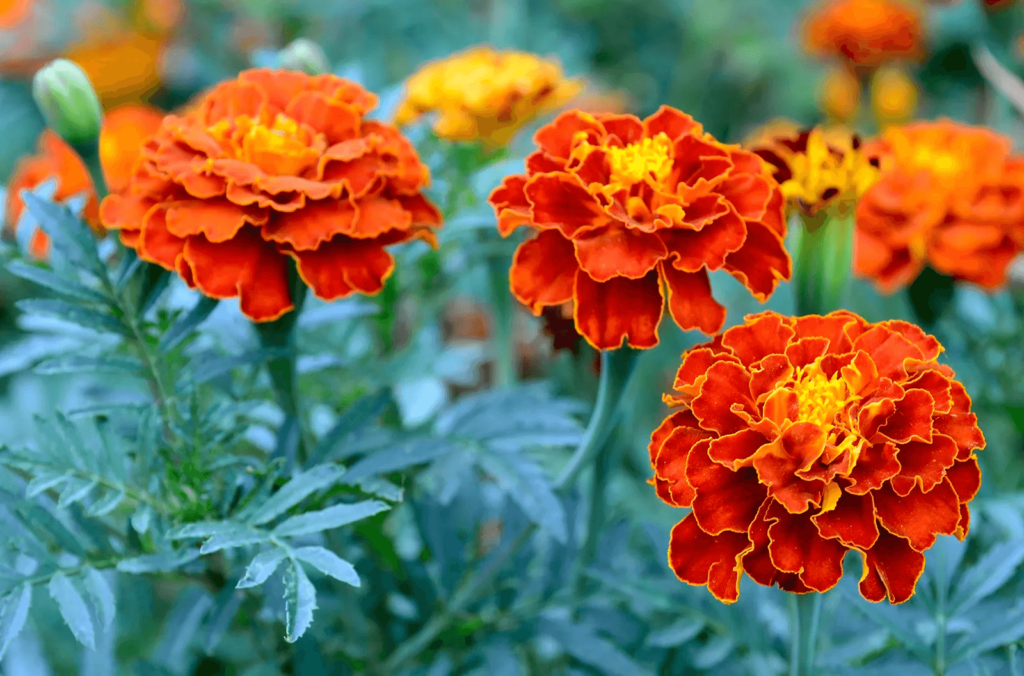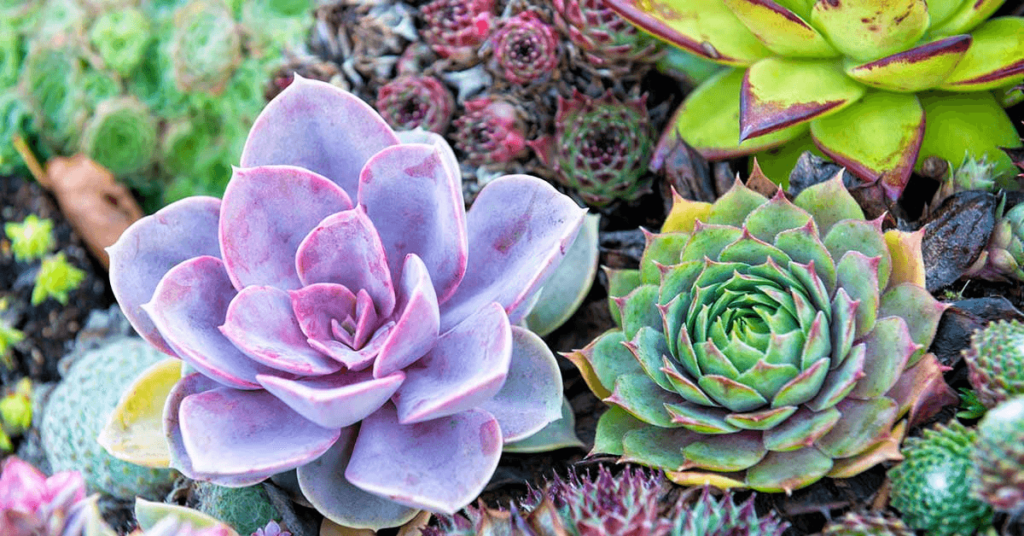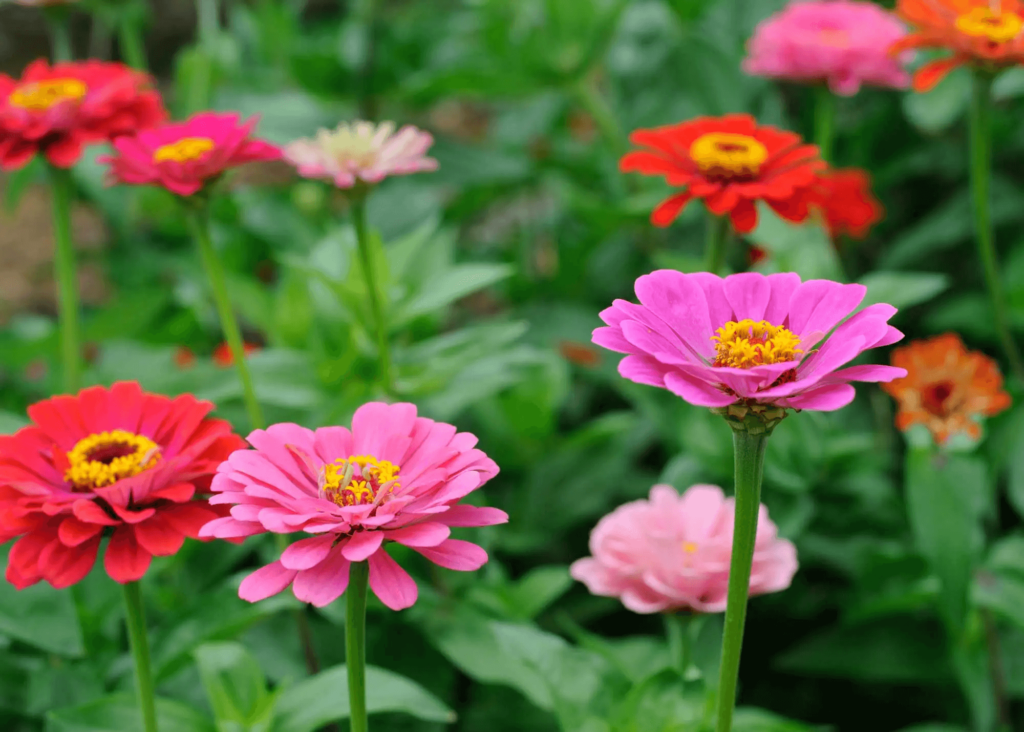Introduction
Engaging in gardening as a pastime is a really thrilling experience that has a soothing effect and also gives you a feeling of achievement at the end of the day. The scenario can be something like a simple beginning with the feeling of being screwed somewhere, as it can be confusing to choose from among many plants that one has to take care of.
However, fear not! A variety of plants is undemanding, robust, easy to handle, and therefore suitable even for absolute beginners.
In this article, we will give you the ten most suitable plant types for picking oneself in 2024. Not only do these plants need to maintain a minimum level of care, but they also provide attractive views and joy to open-air spaces.
Table of Content
- Marigold – Vibrant Blooms
- Basil – Culinary Delight
- Snake Plant – Air Purifier
- Succulents – Drought Resistant
- Lavender – Fragrant Beauty
- Pothos – Easy Care Vines
- Tomatoes – Edible Rewards
- Zinnia – Colorful Display
- Mint – Aromatic Leaves
- Peace Lily – Indoor Elegance
List of Best Plants for Beginner Gardeners 2024:
Beginning a garden can seem complex and complicated. Picking the right plants follows the successful initial steps. One plant for a beginning garden should be marigolds to please the eye, basil for the kitchen, snake plants to cleanse the air, succulents because they save water, and lavender that smells good.
Some of the other easy-to-grow options are pothos, tomatoes, zinnias, mint, and peace lily. The plants not only fully forgive small mistakes but also give us beauty, culinary benefits, and even air purification and healthiness.
1. Marigold

Marigolds (Tagetes), known for their rich colors of golden yellow or hot orange, are admired for their deep orange shades. They are annual species, which implies that they live, flourish, and die in a single season. The cherry blossoms flower extravagantly these soft daisy-like beacons of joy to any garden.
For those who are garden beginners but are galloping for a flower box full of colors and a low-maintenance regime, Marigolds are the perfect fit. The fragrance with a beautiful fair scent will keep a garden free from pests, and, in addition to their long-lasting blooms, they will be a spontaneous jig of colors.
Growth Requirements:
- Sunlight: Full sun to partial shade
- Soil: Well-draining soil
- Water: Moderate watering, avoid overwatering
- Temperature: Thrives in warm climates
Unique Qualities:
- Pest-repelling properties
- Low maintenance
- Fast-growing
Advantages:
- Attracts beneficial insects
- Colorful blooms for months
- The agent has a high heat and drought tolerance level.
Disadvantages:
- The fungal infection’ powdery mildew’ is prone to.
- Sensitive to overwatering
Care Tips for Beginners:
- Plant in a site that enjoys full sun and well-draining soils.
- Water evenly, but avoid excessive overwatering.
- Deadheads spend blooms or trim travelers to extend blooming.
- Beware of infestation spots and put the needed sprays right away if possible.
2. Basil

Herbs are essential components in any given kitchen, and basil (Ocimum basilicum) is a fragrant and aromatic herb that tastes as good as it smells. There is something about basil’s exquisite green leaves and its alluring flavor that makes it stand out, and it is placed in homes all over the world as the final touch and the essential ingredient in many dishes.
Basil, a favorite kitchen herb, is one that not only delivers good taste but also renders gardening a doable option for newbie gardeners. It is loaded with scent and edible character, which distinguishes it from other plants. Therefore, everyone should add it to the blooming grower’s gardens. Also, you can choose the Best Expandable Garden Hose Over 100 Feet to be useful in large areas of irrigation and to fairly reach those distant parts of the yard
Growth Requirements:
- Sunlight: Full sun
- Soil: Well-draining, fertile soil
- Water: Regular watering
- Temperature: Warm, consistent temperatures
Unique Qualities:
- Versatile culinary herb
- Fast-growing
- Repels pests
Advantages:
- Enhances culinary dishes
- Grows well both inside and outside.
- Attracts pollinators
Disadvantages:
- Susceptible to fungal diseases
- Needs regular pruning
Care Tips for Beginners:
- The planting place should be sunny with soil that drains well.
- Water when the first one inch of the soil is completely dry.
- Trim off the flower buds in order to prompt the leaf generation.
- Cut back all of your leaves frequently to keep your plants short and bushy.
3. Snake Plant

Plant fronds of the Snake Plant (Sansevieria) are commonly used inside due to their unique form and ability to filter toxins from the air. The application of its awkward and high patterns raises the mood of the room, which is indoors. Elevate your garden decor with Top Garden Ornaments Outdoor and Lights Ornaments.
The Snake Plant, owing to its easy-to-grow trait, is an ideal pick for an amateur gardener whose sole objective is to add a spoonful of green to their indoor places. They are natural air filters that require very little maintenance, and that is how they beautify any home and, at the same time, function effectively.
Growth Requirements:
- Sunlight: Indirect light to low light
- Soil: Well-draining, sandy soil
- Water: Infrequent watering
- Temperature: Tolerates a wide range of temperatures
Unique Qualities:
- Excellent air purifier
- Drought tolerant
Advantages:
- Easy to care for
- Improves indoor air quality
Disadvantages:
- Sensitive to overwatering
- Can be toxic to pets if ingested
Care Tips for Beginners:
- Attempt to position in the shadowy or dimly lit places.
- Water sparingly, keeping the ground dry between watering.
- Water moderately to prevent the roots from rotting.
- Use a damp cloth to wipe off the leaves for dust collection.
4. Succulents

The group of plants called succulents is characterized by their thick leaves and ability to store water, which increases their resistance to dryness significantly. These tiny yet adorable plants in a spectrum of shapes, sizes, and colors can bring a unique aesthetic to any garden or interior.
With their easy maintenance and striking appearance, succulents are great for new gardeners looking for low-maintenance plants that give a punch of visual interest. Their unique shapes and the fact that they are drought-resistant provide them with a designer image and make them an excellent choice for bringing nature home.
Growth Requirements:
- Sunlight: Bright, indirect light
- Soil: Well-draining succulent mix
- Water: Infrequent, deep watering
- Temperature: Warm, dry climates
Unique Qualities:
- Drought tolerant
- Wide variety of shapes and colors
Advantages:
- Low maintenance
- Drought resistant
Disadvantages:
- Sensitive to overwatering
- Susceptible to root rot
Care Tips for Beginners:
- Plant in a spot draining water well and exposed to full sun.
- Water occasionally after the soil is dried thoroughly.
- Make sure you ventilate well in order to avoid rot.
- Utilize cactus/succulent special fertilizer during the plant growing season.
5. Lavender

Lavender (Lavandula) is one of the popular herbs known for the beauty of the purplish flowers and the distinctive aroma that attracts attention. This garden staple does not exclude its key feature, which is not only beauty but also holds calming and therapeutic properties for us humans, nation, and natural healers.
Lavender is a suitable treasure for inexperienced flower planters who seek the beauty and fragrance that they want in their gardens. Since its easy care nature and multiple uses make it an attractive plant to grow, it is a choice that gives a rewarding and enjoyable experience in the viewing and aroma. Check out our The Ultimate Stone Planter Guide to elevate your garden decor.
Growth Requirements:
- Sunlight: Full sun
- Soil: Well-draining, alkaline soil
- Water: Moderate watering, avoid overwatering
- Temperature: Thrives in warm, dry climates
Unique Qualities:
- Fragrant flowers and foliage
- Attracts pollinators like bees and butterflies
Advantages:
- Drought tolerant once established
- Medicinal and culinary uses
Disadvantages:
- Short-lived perennial
- Susceptible to root rot in wet conditions
Care Tips for Beginners:
- Plant in a sunny spot with well-draining soil.
- Water deeply but infrequently, allowing the soil to dry out between waterings.
- Prune after flowering to promote bushy growth.
- Harvest flowers for drying to enjoy their fragrance year-round.
6. Pothos

Similarly to a few others, Pothos (Epipremnum aureum) is also pretty popular indoors and is highly appreciated for its green foliage and perennial long vines. This amazingly adaptive plant does very well in various indoor surroundings and is one of the perfect plants for noobs who are just starting their green journey.
People who are just discovering the greening of their indoor environment should definitely consider Pothos, which requires the least amount of effort to keep up. It is the variety because of its adaptability, fastness in growth, and air-cleansing capabilities that make it a disease that is liked and, at the same time, rewarding.
Growth Requirements:
- Sunlight: Indirect light to low light
- Soil: Well-draining, fertile soil
- Water: Moderate watering
- Temperature: Room temperature, avoid drafts
Unique Qualities:
- Easy care and low maintenance
- Excellent indoor air purifier
Advantages:
- Tolerates low light
- Fast-growing
Disadvantages:
- Toxic to pets if ingested
- Requires regular pruning to control size
Care Tips for Beginners:
- Linked directly or indirectly in low or indirect light.
- Wait to water the soil if it is already moist.
- From the sides, twiggy leaves are trimmed back to maintain the volume.
- Root cuttings in water or soil are used to multiply their number.
7. Tomatoes

The tomato (Solanum lycopersicum) is steered by its versatility and boundless potential, for it yields sigh-worthy, sweet, and irresistible fruits. From small gardens to containers or hanging baskets, tomato yields are so diverse that they provide an abundance of delicious dishes for all gardeners.
Tomatoes have become the most apparent and sensible option for freshly initiated gardeners who would like to eat their produce. A foolproof care plan makes this fruitful plant land a flourishing garden that offers juicy and delicious tomatoes that give home-cooked meals a unique taste and an enjoyable outdoor adventure.
Growth Requirements:
- Sunlight: Full sun
- Soil: Well-draining, fertile soil
- Water: Regular watering, avoid overwatering
- Temperature: Warm temperatures, frost-sensitive
Unique Qualities:
- Edible fruits with various sizes and colors
- High yield potential
Advantages:
- Versatile culinary use
- Rewarding harvest
Disadvantages:
- Susceptible to pests and diseases
- Requires staking or support
Care Tips for Beginners:
- Plant in full sun and use the same rich soil.
- Water is required to make sure that the soil remains moist enough.
- Stabilize plants with stakes or cages so they do not sprawl.
- Monitor and deal with pests and their effects promptly, if any.
8. Zinnia

Zinnias are delicate but easy-to-grow annuals that produce bright-colored flowers that last for a long time (Zinnia elegans). These popular plants are hard to miss as they cheer up gardens all year round with a palette of vibrant colors, thus making them a go-to choice for gardeners wanting to accent space.
Beginner gardeners can have a lot of fun and benefits with zinnias, for they are bursting with colors and are easy to take care of. Their pollinators’ attracting abilities and long-lasting blossoming make them an excellent choice as a garden element. Scrutinize the top 29 trending garden pot plants in 2024, which offers a wide variety to match any gardening requirements and style.
Growth Requirements:
- Sunlight: Full sun
- Soil: Well-draining, fertile soil
- Water: Regular watering
- Temperature: Warm temperatures
Unique Qualities:
- Wide range of colors and sizes
- Attracts pollinators like butterflies and bees
Advantages:
- Easy to grow from seed
- Long-lasting blooms
Disadvantages:
- Susceptible to powdery mildew
- Deadheading required for continuous blooming
Care Tips for Beginners:
- Plant in a sunny location with well-draining soil.
- Water regularly, keeping the soil evenly moist but not waterlogged.
- Deadhead blooms to encourage new growth.
- Start from seed indoors or sow directly in the garden after the last frost.
Also Read: 20 Plant Labels for Your Vibrant Garden
9. Mint

Mint (Mentha) is a multipurpose herb that has gained popularity because of its minty leaves and sweet taste. From spearmint to peppermint, this wide-ranging herb is easy to grow in the kitchen or apothecary garden; thus, it is a must-have for everyone.
There is no doubt that mint is the best mint for beginner gardeners looking to enhance their aromatic gardens with different moods. Because of its high propagability, stable performance, and pleasant smell, basil turns into a valuable and fulfilling spice to grow on its own.
Growth Requirements:
- Sunlight: Partial shade to full sun
- Soil: Well-draining, fertile soil
- Water: Regular watering
- Temperature: Moderate temperatures
Unique Qualities:
- Aromatic leaves with cooling properties
- Fast-growing and spreading habit
Advantages:
- Easy to grow from cuttings or seeds
- Culinary and medicinal uses
Disadvantages:
- Can be invasive if not contained
- Susceptible to fungal diseases
Care Tips for Beginners:
- Plant in an area that has partial or full sun.
- Water often to maintain uniformly moist soil.
- Trim frequently to induce a bushy style and maintain compactness.
- Pluck requires leaves from the plant for cooking or healing.
10. Peace Lily

The beauty and calmness of a Peace Lily (Spathiphyllum) are owed to its luxuriant green foliage and stylish white flowers. This stunningly beautiful, low-maintenance flowering plant is ideal for new gardeners in their quest for lighting-loving indoor spaces.
Peace Lily bears on itself a sense of sophistication and humble nature that captivates and soothes living in any area. The health-promoting qualities of air-purifying properties and low maintenance requirements render these houseplants the ideal selection for neophyte green thumbs who want to bring some living greenery around the home. Pick the right yard rake for gardening that fits your needs and makes gardening more fun.
Growth Requirements:
- Sunlight: Indirect light to low light
- Soil: Well-draining, fertile soil
- Water: Moderate watering
- Temperature: Room temperature, avoid drafts
Unique Qualities:
- Elegant white flowers
- Air-purifying properties
Advantages:
- Low maintenance
- Improves indoor air quality
Disadvantages:
- Toxic to pets if ingested
- Sensitive to overwatering
Care Tips for Beginners:
- Place in indirect light, in the low to moderate range.
- Water with the top of the soil inch is dry.
- Wet leaves should be washed with a cloth to wash off the dust.
- Make sure you do not overwater the plant to avoid root rot.
Additional Tips for Novice Gardeners
- Start Small: Begin with a few plants that are easy to care for to build confidence and experience.
- Know Your Conditions: Understand your garden’s sunlight, soil, and climate to choose plants that will thrive.
- Regular Monitoring: Keep an eye on your plants for signs of pests, diseases, or stress, and address issues promptly.
- Learn from Mistakes: Don’t be discouraged by failures; they’re valuable learning opportunities.
- Connect with Fellow Gardeners: Join gardening communities or forums to exchange tips, ask questions, and share successes.
Also Read: Thriving in Zone 9B Plants Ideas and Gardening Tips
Conclusion
Going gardening, particularly for the first-timer, can be thrilling as well as enjoyable. With the careful selection of plants that match your soil type and lifestyle, you can build up a healthy garden, giving you both tranquility and beauty.
Be sure to begin slowly, observe the plants and their current needs, and enjoy the process of learning. Gradually, you will be getting more experienced, and then you’ll be comfortable and able to add to your garden and try new flowers and methods.
Gardening is a walk to and a walk-in, growth, patience, and connection with nature, and that stroll teaches its lessons and shows its rewards.
Frequently Asked Questions (FAQs)
1. How often should I water my plants?
Monitor the soil’s moisture level and water when the top inch feels dry. Overwatering can lead to root rot, so it’s essential to avoid waterlogged conditions.
2. What type of soil is best for my plants?
Well-draining soil is crucial for most plants to prevent waterlogging and root rot. Choose soil specific to your plant’s needs or amend with perlite or sand for better drainage.
3. How much sunlight do my plants need?
Most plants require full sun to thrive, but some prefer partial shade or low-light conditions. Understanding your plant’s sunlight needs is essential for its growth and health.
4. How do I prevent pests and diseases in my garden?
Regular monitoring, proper watering, and good cultural practices can help prevent pests and diseases. Organic pest control methods and timely interventions can also be effective.
5. Can I grow plants indoors without natural sunlight?
Yes, many plants can thrive in low-light conditions with artificial lighting, such as grow lights. For indoor gardening success, choose plants that are tolerant of low-light environments.

